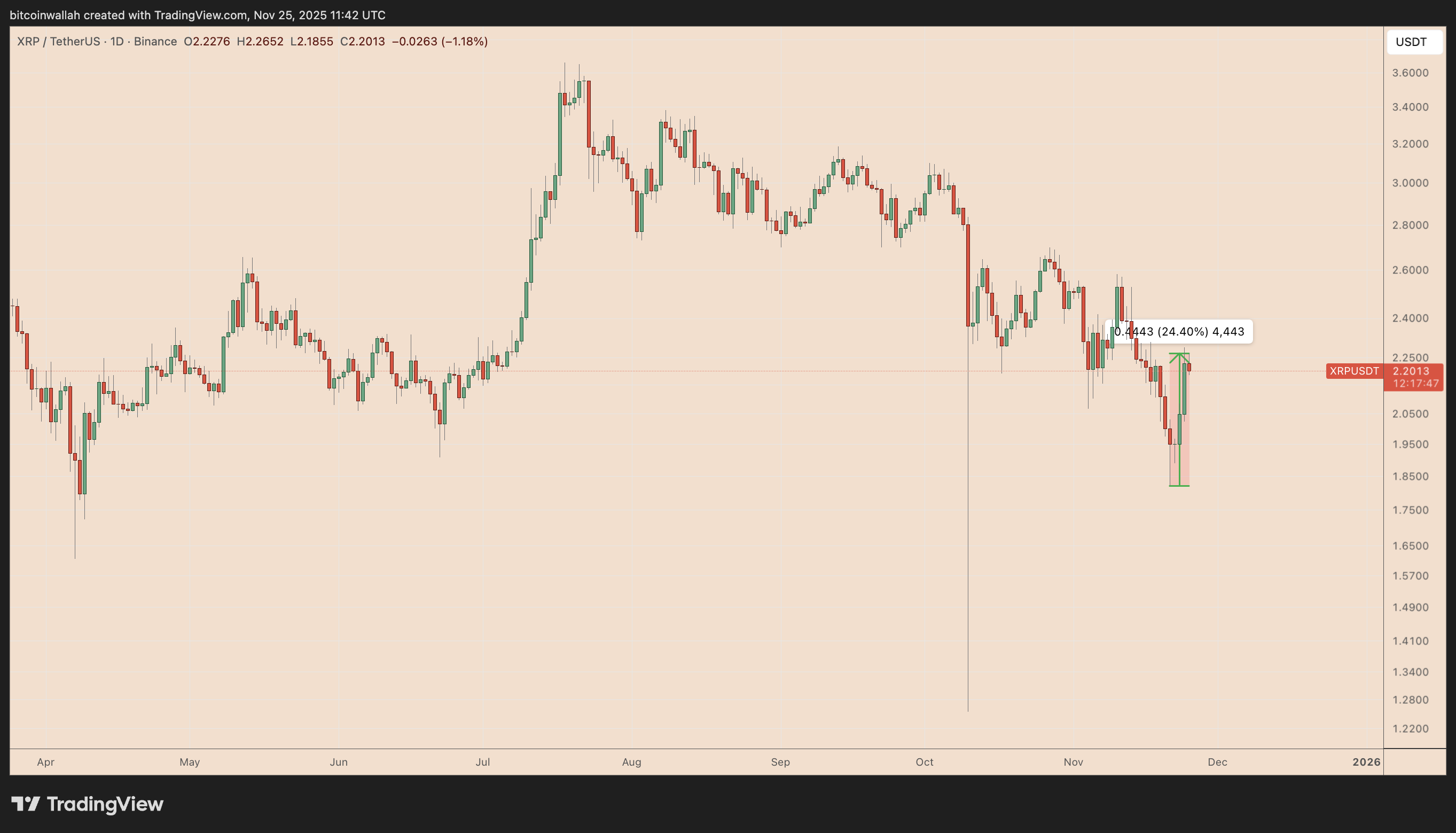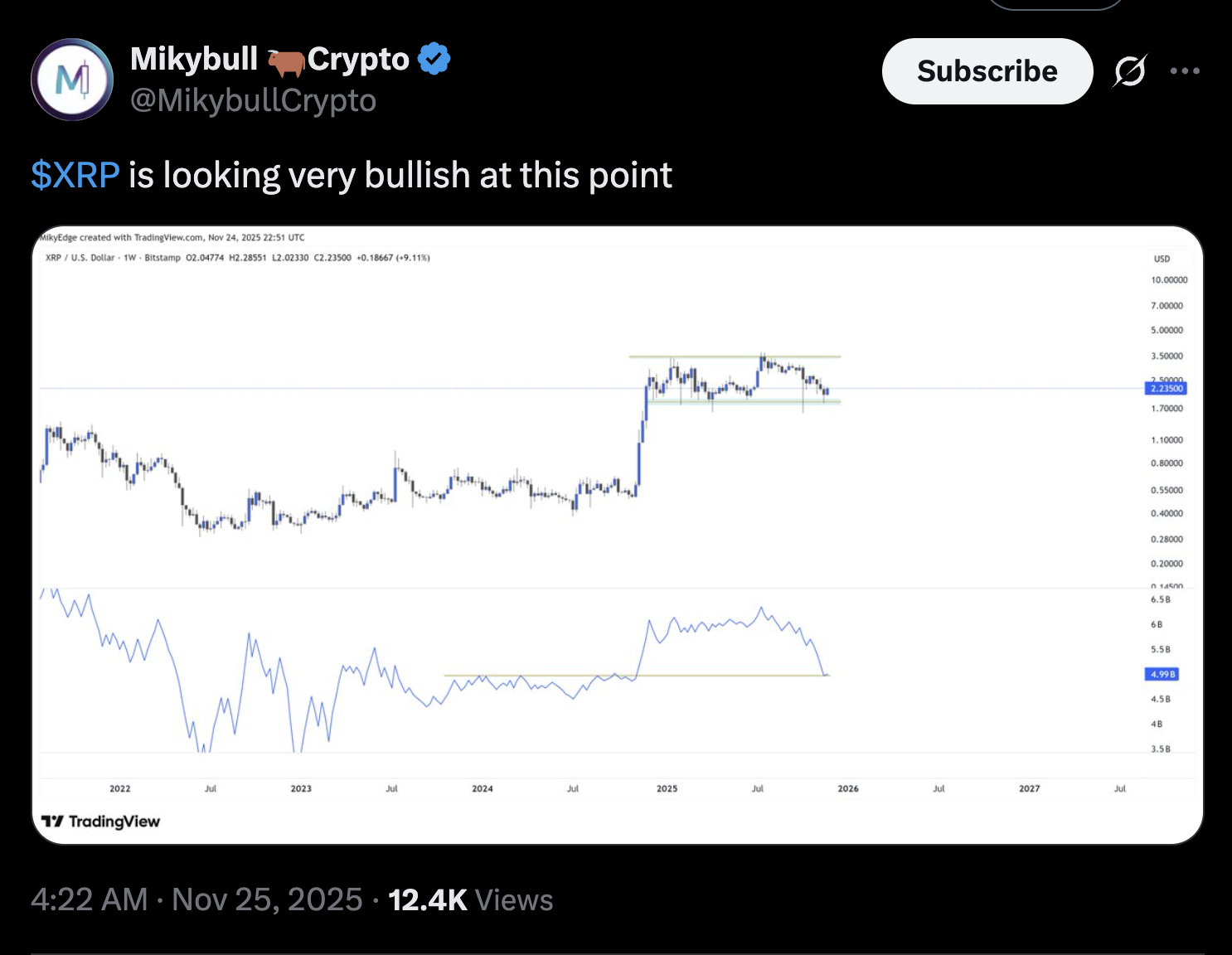What to Know:
- XRP is showing signs of a strong recovery, bouncing off the $2 mark with potential to reach $3.30–$3.50.
- Newly launched XRP ETFs are seeing significant inflows, adding bullish pressure.
- Technical analysis points to a possible 50% rally, but key resistance levels must be broken for confirmation.
XRP is making waves, rebounding impressively from the $2 level amid a generally constructive regulatory environment for digital assets. This recovery is supported by technical indicators and, crucially, fresh capital inflows from new exchange-traded funds. For institutional investors and active traders, these are signals worth watching closely, as they could presage a substantial move higher.
Recent data indicates that XRP has surged nearly 25% from its recent low, bolstered by over $164 million in daily ETF inflows. This follows the launch of Grayscale’s GXRP and Franklin Templeton’s XRPZ, demonstrating growing institutional interest. The psychological $2 level now acts as a critical support, and holding above it is essential for maintaining bullish momentum. This dynamic highlights the increasing role of ETFs in providing liquidity and influencing price action in the digital asset space, similar to how gold ETFs impacted gold markets in the early 2000s.

From a technical analysis perspective, XRP’s ability to defend the $1.95–$2.05 support band is a positive sign. This level has consistently acted as a springboard since December 2024, with previous retests leading to substantial rallies toward the $3.50 mark. If this pattern repeats, XRP could see another 50% gain by the end of the year. Traders should watch for confirmation signals, such as sustained trading volume and breakouts above key resistance levels.
On-balance volume (OBV) is also providing a bullish signal. OBV measures buying and selling pressure by tracking volume flow. The recent bounce in OBV from a major support area, coinciding with XRP’s price touching $2, suggests genuine buying interest. This indicates that investors are accumulating XRP rather than selling, reinforcing the bullish outlook. This is similar to how institutional accumulation patterns are monitored in traditional equities to gauge long-term price potential.

Drawing parallels to XRP’s 2017 breakout, some analysts believe the current market structure mirrors that earlier setup. The $2 region is behaving similarly to the mid-range support reclaimed before the historic rally eight years ago. With XRP stabilizing around this level and buyers stepping back in, there’s potential for a revisit to the $3.30–$3.50 range. Such historical patterns often influence market sentiment, but it’s crucial to remember that past performance is not indicative of future results.

However, the path to higher prices isn’t without obstacles. XRP faces immediate resistance at the 0.236 Fibonacci retracement level near $2.23. Overcoming this hurdle is crucial for further gains. Additionally, the 50-day and 200-day EMAs, which have previously capped upside attempts, pose significant barriers. These EMAs align closely with the upper trendline of a descending channel, a pattern that has guided XRP’s price lower since the summer.

If XRP fails to break above these resistance levels, the price could rotate back to the channel’s lower boundary, potentially dropping toward $1.82. Such a move would invalidate the bullish setup and suggest the recent bounce was merely a temporary “dead cat bounce.” Risk management is therefore essential, with stop-loss orders placed strategically to protect against downside risk.
In summary, XRP’s recent rebound is supported by positive technical indicators and growing institutional interest, particularly through new ETF inflows. While the potential for a 50% rally exists, XRP must overcome several key resistance levels to confirm a sustained uptrend. Investors should closely monitor price action and trading volume, while also being prepared for potential downside risks. This situation underscores the importance of blending technical analysis with an understanding of market structure and regulatory developments in navigating the digital asset space.
Source: Original article



